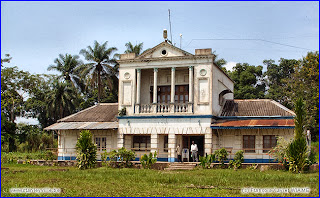"Three historic patterns of urban settlement are found in
Africa. Monumental urbanism is characterised by substantial permanent
structures in the stone, and was especially prominent in north, eastern and
southern Africa, from Egypt and Eritrea to Zimbabwe. Satellite urbanism is
characterised, in both early and later contexts, by collaboration between
interlinked community clusters that together create and urban settlement
structure. This type of settlement, which is normally identified with earthen
structures, is found especially in West Africa, from Mali to northern and
southern areas of Nigeria. Migratory or peripatetic urban settlements
characteristically prevailed in central Africa, these cities sharing a
relatively nomadic identity. Related cities were often re-established on a new
site following the death of a ruler or a sequence of traumatic events. Many
peripatetic cities were built of more ephemeral materials, such as raffia and
bamboo, but were also associated with more permanent ritual sites, such as
cemeteries. In some African urban contexts, several of these design attributes
were at play, with local building materials providing unique possibilities for
creativity."
By David Adjaye









